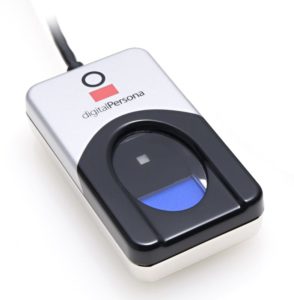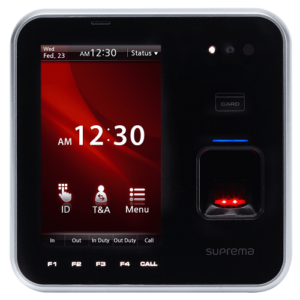 Security and convenience are the two big selling points for biometric technology, but with time and attendance applications, the latter is weighted much heavier in terms of priorities. Yes, time and attendance solutions can be one and the same as access control, but it is important to note that they are primarily in place to bring accountability and administrative relief to the parties deploying the technology.
Security and convenience are the two big selling points for biometric technology, but with time and attendance applications, the latter is weighted much heavier in terms of priorities. Yes, time and attendance solutions can be one and the same as access control, but it is important to note that they are primarily in place to bring accountability and administrative relief to the parties deploying the technology.
Last week we looked at four unique deployments of biometric time and attendance, highlighting the various reasons companies and organizations from around the world are choosing next generation identity management to track payroll. But that’s not the full picture; time and attendance isn’t just for special occasions like some fine china, it’s biometrics for the everyday workplace too. Today, to bring a close to Time & Attendance Month, we are going to look at three examples of specific time and attendance products making a difference on a wide scale.
Authentication Where you Eat
 To understand how much traction biometrics already has in the time and attendance market, one need not look further than the restaurant industry, which has embraced the fingerprint in lieu of the punch card thanks to U.are.U biometric readers from Crossmatch.
To understand how much traction biometrics already has in the time and attendance market, one need not look further than the restaurant industry, which has embraced the fingerprint in lieu of the punch card thanks to U.are.U biometric readers from Crossmatch.
The USB fingerprint readers are used for time and attendance operations at a long list of restaurants. Hooters, Popeye’s, Wendy’s and Chili’s (though their franchisee, Valenti Management), and Meijer all use Crossmatch U.are.U fingerprint readers to ensure accurate and accountable attendance is being taken at their locations. The solution is also cracking down on truant bakers in Mexico, with Crossmatch receiving a recent U.are.U deployment at the Montparnasse Pasteleria bakery chain. Crossmatch’s technology was chosen in that scenario particularly to crack down on buddy punching, a type of time fraud that has employees clocking in their absent friends.
Outside of the restaurant, U.are.U readers are bringing that same kind of accountability to the retail space, through POS integrations. In March, the company announced that the readers had been implemented by Goorin Bros, a high-end hat retailer, combining the accountability described above with logical access control.
The Numbers Driving Biometric Adoption
 It makes sense that the the technology we’re talking about is so prolific. In the retail environment, biometric time and attendance can save real dollars when it comes to the bottom line. Actual iD, a company specializing in an end to end biometric time and attendance solutions, has received a number of deployments in the automotive dealership world, and subsequently has performed case studies to measure the effect its product has made.
It makes sense that the the technology we’re talking about is so prolific. In the retail environment, biometric time and attendance can save real dollars when it comes to the bottom line. Actual iD, a company specializing in an end to end biometric time and attendance solutions, has received a number of deployments in the automotive dealership world, and subsequently has performed case studies to measure the effect its product has made.
An examination of an Actual iD deployment at a car dealership revealed that thousands of dollars were being saved on a monthly basis thanks to the implementation of biometrics. The time and attendance system thwarts time theft naturally, thanks to its biometric nature, and the automation of everything else shaves off hours of administrative time, which is also susceptible to human error. When all was said and done, the time saved and accountability gained added up to $3,150 in savings per month.
Similar results were observed in other dealerships that used the biometric solution – a Porsche dealership in Oakville, Ontario, and a Toyota dealership with two locations. Automotive dealerships – like other retail environments – present a particular challenge when it comes to tracking attendance, thanks to the weekends and evenings shift-based nature of the work, which is largely performed out of managerial sight and on an employee’s own initiative.
At the dealerships in question, a fingerprint biometrics scanning time clock was placed at an easy to access location, the employees and administrators were offered training in its use, and the payroll efficiency followed naturally.
Keeping It Contactless
 While fingerprints are the chosen modalities of the above two examples, there is no constraining factor that prevents other types of biometrics from providing the same amount of workforce accountability. Some of the contactless biometric options, like facial recognition, are positioned as a time and attendance option that can prevent the spread of germs in flu season and keep efficiency up when a subject’s hands are less than conveniently available.
While fingerprints are the chosen modalities of the above two examples, there is no constraining factor that prevents other types of biometrics from providing the same amount of workforce accountability. Some of the contactless biometric options, like facial recognition, are positioned as a time and attendance option that can prevent the spread of germs in flu season and keep efficiency up when a subject’s hands are less than conveniently available.
Iris biometrics are often cited as an example of a contactless option for high throughput areas. Indeed, we’ve seen the eye-based modality implemented at Winthrop University for student attendance tracking thanks to Iris ID technology. But they are also primed for the enterprise.
Earlier this week, IriTech announced an upgrade to its iris time tracking solution. Previously known as IriShield, the new Time & Attendance Enterprise is being marketed in India, where IriTech enjoys a strong government presence. As we have seen all month, India is home to a diverse range of biometric time and attendance deployments in government and healthcare, where the technology is used to cut down on graft and add accountability to the places that need it most.
The range of biometric time and attendance deployments in use is truly diverse, but not singular or rare. New solutions are being deployed on a global scale for use in everyday working life. The biometric technologies that we have examined throughout May might serve special circumstances, and the benefits they offer are indeed tangible and significant, but time and attendance is special in that it is a prolific market that puts identity management at the fingertips (and within iris-shot) of the working public.
*
Thank you for joining FindBiometrics for Time & Attendance Month. Stay posted next week as we reveal our next featured topic. Keep the conversation going until then by following us on Twitter and tweeting with the hashtag #FBTimeMonth.
—
May 27, 2015 – by Peter B. Counter


Follow Us